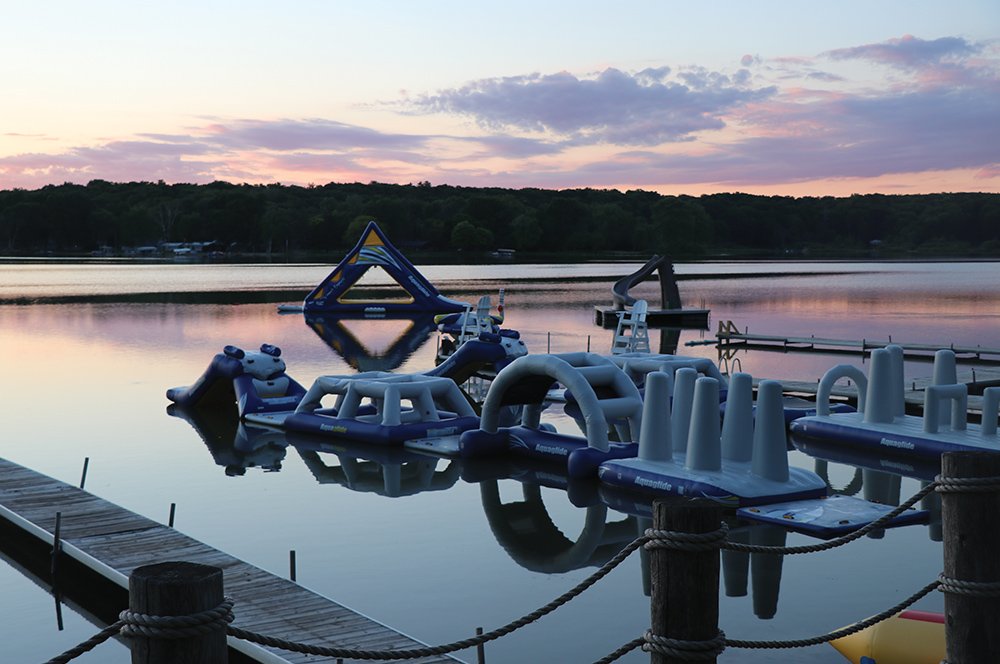Evaluating Water Activities
Take stock, take notice, and take it seriously
By Fiona Scott
Photos: Camp Henry
Water is a staple of many camps. Yes, of course, camps provide and encourage drinking water throughout the heat of summer, but water also hosts a number of activities that allow campers to cool off, squeal with delight while playing with friends, and beam with pride while learning a new skill (or even brush up on an old one). Water at camp can be a lake, a pool, a splash pad, a pond, a river, a creek, a waterfall, a slip-n-slide, sprinklers, a hose, or any combination of these.
While water provides joy through its use in activities and its added aesthetics, it also has the potential to be dangerous. In some ways, managing this risk is no different than managing those in other areas of camp. But there are factors that are heightened by the natural (or unnatural) states in which we experience water.
Weather
Mother Nature can make or break water activities, and not just with thunder and lightning. For example, consider how you might handle the following scenarios:
What if it’s raining so hard it affects visibility?
What if it’s sweltering and lifeguards need more frequent breaks?
What if it’s really warm and the director calls an all-camp swim, creating an unusually high number of swimmers, or a swarm of people trying to use the slip-n-slide?
What if it’s windy, causing a stronger current?
What if it’s windy, making exiting swimmers frigid?
What if a thunderstorm rips through and damages equipment?
How is heat lightning handled”?
How cold is too cold for water temp and air temp?
How foggy is too foggy?
Creating contingency plans for not-so-ideal conditions will help the activities run more smoothly. Review possible scenarios with aquatic staff members during training so they’re clear on how to handle them throughout the busy season.
Injuries
Injuries happen every day at camp. It’s inevitable. But there are also opportunities to be proactive.
Injuries are more common in some water areas/activities than others. Take the time to evaluate which one(s) those are (for example, slip-n-slides are notorious for causing injuries). Have any changes been made to the more “dangerous” activities? Have those changes been documented and trained on to prevent the same thing happening the same way twice?
Upkeep
In addition to the hazards water can present, there is also the upkeep of equipment. Those who have pools and lakes know this all too well, although slip-n-slides, inflatables, canoes, fishing poles, and many other water toys keep employees just as busy.
What factors need more attention in a water area?
Where can policies and procedures be improved in order to take better care of equipment and/or an area?
Do staff members who interact with water activities need to be trained differently to provide care for equipment and/or an area?
What upkeep needs to be done now or done more consistently?
Staff
A camp may have the most gorgeous weather and the best system for tracking injuries and finding resolutions to injury-prone areas and a wonderfully maintained pool, but if staff members are not prepared and attentive during water activities, you’re sunk. This concern goes beyond lifeguards; whether aquatic observers, sand-dwellers, boat drivers, buddy board czars—all must be vigilant when it comes to safety:
Are staff members prepared for emergencies?
Do they know how to fit lifejackets?
Are they focusing on their area instead of socializing with the nearest staff member?
Do they know how to keep themselves safe (lifejacket, guard tube, hydration, sunscreen, etc.)?
Do they model what they are asking the kids to do?
Are they ready to instruct a canoeing activity or take a fish off a hook when the time comes?
Are they equipped/empowered to change or alter activities if they have concerns?
Is everyone clear on the different meanings of whistle signals?
Application
Don’t turn into a bundle of worry and stress with all these what-ifs. That is not the intent. Instead, take the time to reflect and intentionally evaluate facilities and make positive changes. Take action before the water season is upon us!
Fiona Scott is the Assistant Program Director and Lifeguard Instructor at Camp Henry in Newaygo, Mich. She does not claim to be a water aficionado; in fact, she is searching for answers to some of these questions herself. Scott has seen and cared for a variety of water activities and spaces and is happy to brainstorm and problem-solve with anyone who is interested. Reach her at fionas@camphenry.org.


